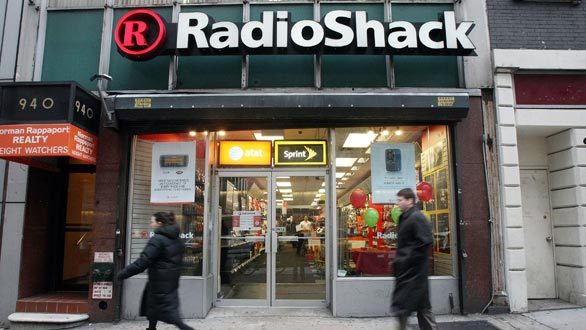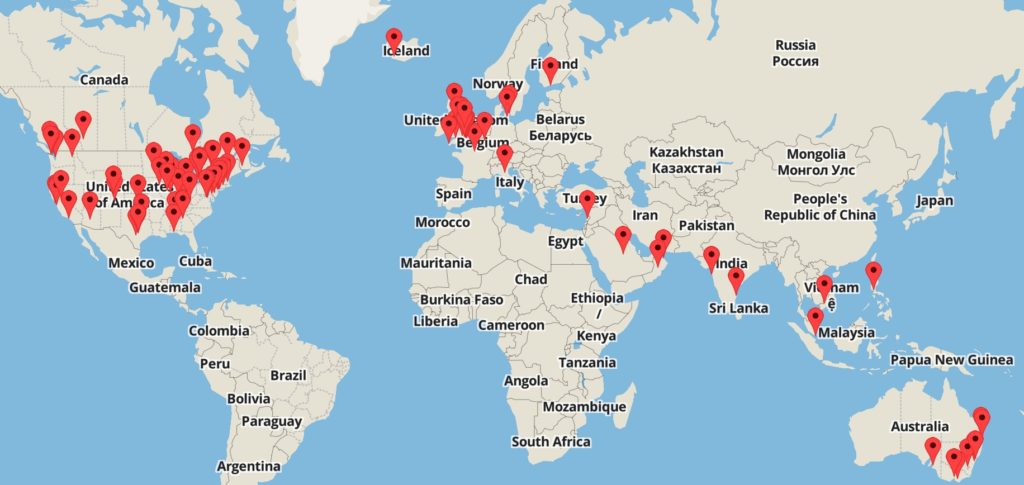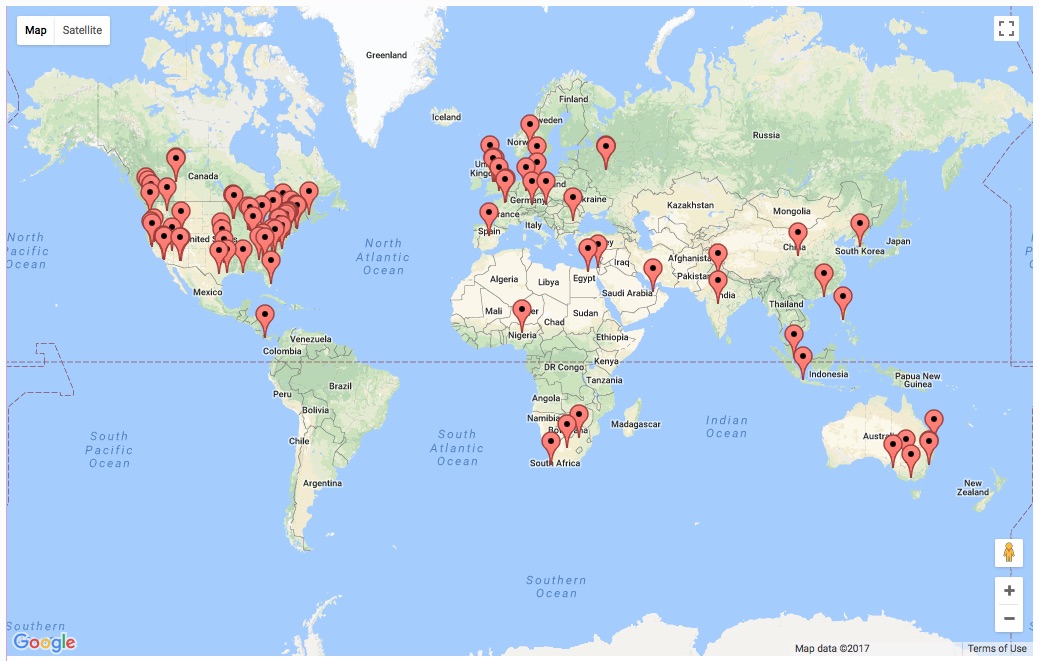In the fall of 1986 I completed my undergraduate studies at the University of Iowa. With a B.A. in Spanish, and having taken some courses in computer science, I wasn’t sure what my job prospects would be. My girlfriend at the time graduated a semester earlier than I, and had already moved to the San Francisco Bay area where we planned to live.
In December, shortly after graduating, I decided to start job hunting in California. At that time, the job market was tough, and finding something wouldn’t be easy. I had the disadvantage of not being there, and was without any connections in the area.
I looked at the job listings for the area. “Where to begin?” I thought, looking at the various positions available. In that moment, I knew what I wanted to do. Instead of taking what was available, Based on my own interests, I’d choose what business I wanted to work for and then see if they would hire me — even if no job openings existed. This was a strategy that worked for me on several occasions.
Back in 1979, about 7 years earlier, I was in 9th grade, and Radio Shack began selling the Tandy TRS-80 Model I computer. I’d always had an interest in audio systems and electronics, so I’d spend a lot of time at the Radio Shack stores learning about the latest gadgets, tools, and supplies. With computers now available in the store, I began spending a considerable amount of time there, writing software programs on the store computer. Before too long, I knew the store and products fairly well. I got to be a ‘regular’ in the store, and would sometimes help customers. I enjoyed engaging with customers and finding solutions to their needs.
Reflecting on this experience, I decided to see if I could get a job with Radio Shack in San Francisco. I called a store in the area to get the name and phone number of the district manager (the DM). His name was Steve. We ended up talking on the phone, and when he found out I was fluent in Spanish, had computer skills, and was from Iowa, he hired me over the phone to begin immediately — in the Mission District of San Francisco.
Mr. Nguyen, the manager of the store where I first worked, was from Vietnam. I was an assistant manager with hopes of having my own store one day.
Mr. Nguyen was an excellent manager to train under, and we had a really good team at the store. At that time, just about everyone worked on commission. Any tasks not related to making sales, became less of a priority. Cleaning the store, receiving orders, putting merchandise on the shelves, and helping customers with returns or repairs were less desirable tasks since employees weren’t rewarded for these tasks.
As an assistant manager, I was often left managing the store on my own. I decided to create multiple ‘departments’ in the store. So, when a customer needed repairs, rather than being left sniffing their underarms wondering why all the sales people were avoiding them, I’d immediately greet the customer saying, “Welcome! Let me have you work with Bob in our repairs department.”
There was a measure of absurdity in my assertion that we had departments in the store. Radio Shack isn’t JC Penny or Sears, but I wanted to step it up a notch. So, we had a ‘receiving department’ and a ‘custodial department.’ By giving employees accountability over each area, rather than trying to avoid tasks, they took ownership of them.
Based on how well they were doing in their respective areas of responsibility (those tasks with no commission or reward), I would make sure each employee was compensated. I’d wait until I had helped a customer with a huge sale, like a computer or home entertainment system, and then I’d ask Bob to complete the order. That meant Bob, our ‘repairs manager’ would get the commissions for that order.
I wasn’t too concerned about losing income. With so much experience in Radio Shack stores, I’d become a kind of Dancing Wu Li Master of sales. I had memorized every product in the store, and knew the catalog cover to cover. As if by magic, the pages would open to the product I was looking for.
Radio Shack had a training program called the 15 steps to selling. It was quite good, and done right actually could be an effective way to meet people’s needs without selling them stuff they didn’t need. Several of us decided not to focus on maximum sales (and income) but to focus instead on meeting people’s needs, and letting income take care of itself. This approach worked and people flocked to our store.
When a customer would walk in the door, they would begin saying something like, “Do you have…” or “I’m looking for…” and I would cut them off mid sentence and say, “Yes, we have that.” It was mostly for theatrics. Perplexed, they’d continue explaining their need as I gestured them to follow me. Listening to them closely, I’d navigate to the place in the store where we needed to be so that by the time they finished talking, I’d be standing in front of the very product they were looking for, and with a game show host hand gesture, present the item to them.
Occasionally my little stunt would backfire, and the customer would describe something we didn’t have the the store. The other sales people would look on, thinking, “What’s he going to do now?” I was determined to help everyone that came in the door. Sometimes it meant creating a solution by combining adapters and cables to do what the person wanted to do. On one occasion, I had to purchase a soldering kit to solve a customer’s need.
Because sales and commissions weren’t our first priority, and helping the customer was our focus, it didn’t matter how small the item was, or how long it might take to help the customer.
There was a rare occasion when we actually didn’t have what they were looking for. We’d never say, “We don’t have that. Sorry.” Instead, we’d get on the phone and find it for them.
I enjoyed the selling process, and finding just the right product for people. Sometimes we’d be out of a product. “We have just what you need,” I’d say confidently walking toward the display area. Then I’d wave my hand presenting the empty space on the shelf, “What you need is the XB500,” and with much enthusiasm I’d begin to describe all the features the XB500 had to offer. “I’ll buy it!” the customer would say. The entire sales process would transpire without a product. As a neighborhood store, people were happy to stop back a day or two later for items that needed to be ordered.
To make the job a little more fun, we’d use some hackneyed sales techniques and phrases, with exaggerated delivery of lines — like something out of a 1950s television commercial.
The District Manager would stop in and visit us regularly. So, he saw many of these antics, but acknowledge that although our approach was unconventional, it was effective.
Working with Radio Shack, normally it takes two or three years to get into your own store. The training process is lengthy, and a store needs to be available. Within about six months, I was promoted to manager and given my own store in Daly City.
It was a very narrow store with two levels, and not an ideal location. Next door was Matthew’s electronics and entertainment megastore. Inside the store, customers would be given wine and cheese, along with other hors d’oeuvres. Anyone purchasing a television or stereo system would be given a fully assembled bicycle. Matthew’s had a huge advertising budget, and their television commercials from the 1980s can still be found on YouTube.
One day I visited their store. “We’re not in the Mission District anymore,” I thought to myself as I looked around at one of the most impressive displays of electronics I’d ever seen.
“How could I compete with these guys?” I thought.
I saw this as a challenge and growing opportunity. As a teenager, I worked at my mom’s family business an learned a lot of good lessons about hard work and customer service. My mom and step-dad were two of the most successful business people I’ve known — measuring success by how well we care for and serve others. I knew if I could focus on meeting people’s needs, I’d do just fine managing my own store.
Matthew’s brought in customers from around the area who wanted to benefit from their selection and low prices. Sometimes the line would go out the door. Those who were impatient would visit my store instead.
Occasionally I’d get customers in my store because Matthew’s didn’t have what they were looking for. Sometimes I’d replied customer, “Yes, they have that. It’s near the speakers in the back on the right.” I’d memorized their product line and the location of all their merchandise, so sometimes I knew how to find items that newer sales people might not have known about. In these situations, I’d look to my employees and say, “I’ll be right back.” I’d then take the person over to Matthew’s and help them find what they were looking for — all while wearing my Radio Shack Store Manager name tag. The guys at Matthew’s found this quite entertaining. It helped defuse any competitive spirit between our stores. Eventually I had Matthew’s sending me their customers.
Whenever I didn’t have a product someone was looking for, I would continue the sale next door at Matthew’s.
A challenge for my little store was that to get to it from any distance, a person would drive by a dozen other Radio Shack stores. So, to broaden my store’s customer base, I had to do something extraordinary. Over time, word got around and people knew they could get an extra measure of service at our store. We’d get people from as far away as Oakland who would come to have their technical problems solved.
On one occasion, an elderly woman came into my store in search of a phonograph needle that would play 33 and 78 rpm records. Sometimes finding the right needle for a record player would take some effort. It wasn’t always clear what needle would fit. I’d maintained the policy of putting customer needs above commissions, so I wasn’t concerned that this $1 sale might take considerable time. At that moment, I’d be earning about 15 cents per hour. It didn’t matter. I patiently helped this woman, who was very grateful. In fact, she was so grateful that she wrote a letter to Tandy Corporation Headquarters in Texas. That letter got back to my District Manager.
That was a highlight of my career with Radio Shack, and a good way to start off my professional life as a young adult.
I still think back on everything I learned through these various experiences and try to apply those lessons today.





